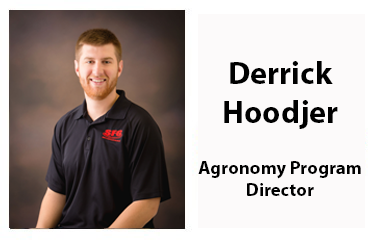Winter Agronomy Conferences
Feb 20, 2023

It is that time of year where the weather keeps us out of the fields spreading fertilizer. To keep active and knowledgeable, the agronomists at SFG attend many winter conferences this time of year. We look at new products and management strategies to continue improving yields. This past week I was able to attend the Agribusiness Association Showcase as well as the Winfield United Regional Meeting. A couple of the highlights in the meetings were cover crop management and strategies to achieve high yield corn/soybeans. These topics are important for our trade areas because there are a lot of yield implications in using them. We know that with some extra management we can produce high yields, even on variable soil.
Cover crops have been important in our area but have still only been utilized on around 10-20% of the acres. Some issues have been managing the termination and increased cost. Management strategies that work the best for termination are either planting before soybeans or making sure the cover crop is burned down early before corn. It often takes more nitrogen to break down extra plant material throughout the year, so making sure a nitrogen plan is in place is also very important when planting cover crops. Keeping a cover on fields throughout the year has many soil health benefits and over time will pay its way in improvements.
My favorite topic is growing high yield corn/soybeans. Most of the strategies are not necessarily new, and the biggest one is more management equals more yield. We’re biased because we sell the products, but the only way to get more out of the system is to put more into the system. Our biggest mistake is likely trying a new product when the issue with yield is something much simpler. For instance, trying side-dressed nitrogen application in corn. If potassium levels are too low to pump that extra nitrogen through the plant, we often won’t see the yield improvements. I have learned through these winter sessions and our on-farm trials that there is an order things must be tried in. My recommendation is as follows: Lime, P & K, Nitrogen, Sulfur, Fungicide, Micronutrients.
Before I make recommendations, I make sure that the program has a good base to start with. There’s no silver bullet and it must be thought of as a system approach. Building a higher yield environment also takes time, so we often say it’s marathon not a race.
At SFG we spend a lot of time continuing our education. All SFG salesmen are Certified Crop Advisors. To keep that status, we must log 40 hours of continuing education over two years. This allows us to stay on the cutting edge and give the most accurate recommendations. Reach out to any of us if you have questions regarding growing more corn/soybeans in 2023.